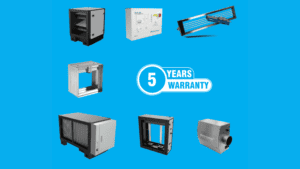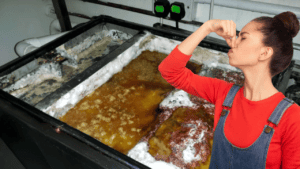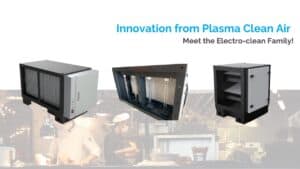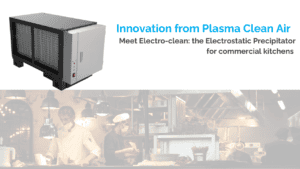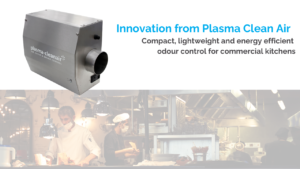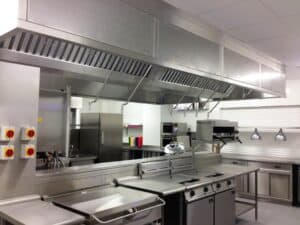Commercial kitchens are bustling environments where the production of mouth-watering delicacies goes hand in hand with the challenge of managing odours, noise, and grease from kitchen exhaust systems. Beyond just focusing on Electrostatic Precipitators (ESP) or UV-ozone systems, a comprehensive approach encompassing the entire kitchen extract system—from the canopy to the discharge—is crucial for effective grease and odour control.
Understanding the Source of Odours and Noise Pollution
Odours and noise pollution often stem from inadequate management of grease in kitchen extract systems. The journey of grease-laden air starts at the cooking source, rises through the extraction canopy, travels down the ductwork, and eventually reaches the discharge point. Neglecting any part of this journey can lead to cumulative issues that affect the overall performance of the kitchen extraction system.
Comprehensive Solutions for Enhanced Performance
To ensure effective grease removal throughout the system, a combination of technologies like Plasma Clean Air’s Coil Filters, ESP, UV-ozone, and compliance with TR19 Grease guidelines are essential. These components complement each other, working in harmony to enhance grease removal performance which reduces ongoing planned preventative maintenance requirements.
Plasma Clean Air offers innovative solutions with technologies that effectively manage grease and neutralise odour. Coil Filters or Grease Bloc Filters located in the kitchen canopy play a vital role in trapping large grease particles at the source. This significantly reduces grease build-up in the kitchen extraction ductwork, reduces the frequency of downstream equipment maintenance (such as ESPs and fans) and mitigates the risk of fire. More effective grease filtration also enhances the performance of UV-ozone systems for the removal of gaseous odours before reaching the atmosphere.
The Overlooked Aspect: Canopy to Discharge Products
EMAQ+ Guidelines (formerly DEFRA’s Guidance on the control of odour and noise from commercial kitchen exhaust) play a pivotal role in setting standards for kitchen extract systems. However, the emphasis leans toward large in-duct mounted components such as fine filtration or ESPs, which are often positioned towards the end of the extract system due to site constraints. This leads to insufficient duct runs to achieve effective odour removal using UV-ozone systems and results in the use of activated carbon which carries expensive ongoing maintenance costs.
Canopy products, including Coil Filters & Canopy Mount UV can be used where there is little plant room space. Read our article on Optimising Plant Space with Canopy Mount UV to learn more about this. The benefits of this approach include capturing high levels of grease at the source which will reduce ongoing TR/19 cleaning requirements, as well as maximising the dwell time within the extract duct to improve odour removal performance.
One aspect which is overlooked the most is the servicing of equipment. This includes regular cleaning and maintenance to ensure that the equipment continues to perform at the highest level. It’s vital that regular planned preventative maintenance is carried out on grease , smoke and odour control equipment and there are savings to be made when this is combined with TR19 duct cleaning through a PPM service plan. Click here to find out out.
Guidance for Consultants and End Users
For consultants and end users, it’s essential to acknowledge the significance of integrating canopy-to-discharge products within kitchen extract systems. Educating stakeholders about the necessity of comprehensive solutions and highlighting how these technologies supplement each other is crucial.
By adopting a comprehensive approach and incorporating canopy-to-discharge products, consultants can offer solutions that not only meet but exceed industry guidelines and standards. End users benefit from improved system efficiency, reduced maintenance costs and reduced fire risk, and neighbouring properties benefit from enhanced air quality.
Commercial Kitchen Extract Solutions By Plasma Clean
Addressing odour, noise, and grease issues in commercial kitchen extract systems demands a holistic strategy. By focusing on the entire system—from the canopy to the discharge—and understanding how technologies complement each other, consultants and end users can achieve superior performance and compliance with industry standards like TR19 Grease guidelines and EMAQ+ recommendations.
At Plasma Clean Air we are dedicated to embracing this comprehensive approach to ensuring a cleaner, quieter, and more efficient kitchen environment for all stakeholders involved.
Get in touch with Plasma Clean Air today to find out more about our approach to commercial kitchen extract systems.

